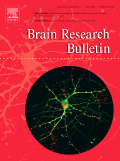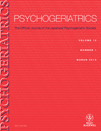
BEHAVIOURAL NEUROLOGY
Scope & Guideline
Charting New Territories: The Dynamic Field of Behavioral Neurology
Introduction
Aims and Scopes
- Neurodegenerative Diseases:
Research on conditions such as Alzheimer's disease, Parkinson's disease, and amyotrophic lateral sclerosis, focusing on behavioral symptoms, cognitive decline, and potential therapeutic strategies. - Pain and Psychological Conditions:
Investigations into the relationship between chronic pain conditions and psychological factors such as depression, anxiety, and stress, aiming to identify effective management and treatment approaches. - Cognitive Assessment and Rehabilitation:
Studies aimed at assessing cognitive functions in various populations, including those with brain injuries or neurodegenerative diseases, and developing rehabilitation techniques to enhance cognitive recovery. - Neuroinflammation and Neuroprotection:
Research into the role of neuroinflammation in neurological disorders, examining potential neuroprotective agents and their mechanisms of action. - Innovative Methodologies in Neuroscience:
Utilization of advanced technologies such as neuroimaging, optogenetics, and artificial intelligence in understanding brain function and behavior. - Psychosocial Factors in Neurological Disorders:
Exploration of how social support, personality traits, and environmental factors influence the experiences and outcomes in patients with neurological conditions.
Trending and Emerging
- Impact of COVID-19 on Neurological Health:
Increased focus on the psychological and neurological impacts of the COVID-19 pandemic, including studies on burnout, mental health, and cognitive impairments related to the virus. - Multimodal Approaches to Treatment:
Growing interest in interventions that combine various treatment modalities, such as acupuncture, cognitive-behavioral therapy, and pharmacological treatments, to address complex neurological issues. - Neuroinformatics and AI Applications:
The rise of artificial intelligence and machine learning in analyzing neurological data, improving diagnosis, and personalizing treatment plans is becoming a significant area of interest. - Exploration of Gut-Brain Axis:
Emerging research on the gut-brain connection, particularly how gut microbiota influences neurological health and behavior, is gaining traction and relevance. - Behavioral Interventions for Pediatric Populations:
A noticeable increase in studies focusing on behavioral therapies and interventions aimed at children with neurological disorders, particularly ADHD and autism spectrum disorders.
Declining or Waning
- Traditional Pharmacological Treatments:
Research that primarily focuses on traditional pharmacological approaches for managing neurological disorders appears to be waning, as there is a growing emphasis on holistic and integrative treatment methods. - Single-Disease Focus Studies:
The journal has seen a decline in studies that focus solely on individual diseases without considering comorbidities or overlapping psychological factors, reflecting a broader interest in multifaceted approaches to treatment. - Basic Animal Models:
While animal studies remain important, there is a noticeable reduction in basic animal model research that does not translate into human applications, as more emphasis is placed on translational research that connects basic science with clinical outcomes. - Generalized Neuropsychological Testing:
The prevalence of studies using generalized neuropsychological assessments without specific contextual relevance is decreasing, as there is a shift towards more targeted and condition-specific evaluations.
Similar Journals

NEUROLOGIA
Unlocking Insights in Neurology, Open to AllNEUROLOGIA, an esteemed journal published by ELSEVIER ESPANA SLU, stands at the forefront of the field of neurology, with a dedicated focus on innovative research and clinical practice since its inception in 1973. As an Open Access journal since 2017, it champions the dissemination of knowledge, allowing researchers, professionals, and students alike to access cutting-edge findings in neurology without barriers. With an impressive Scopus rank of #115 in the clinical neurology category, placing it in the 71st percentile, NEUROLOGIA is categorized as Q3 in both general medicine and clinical neurology, reflecting its impact and relevance in a rapidly evolving field. Based in Barcelona, Spain, the journal's commitment to advancing understanding of neurological conditions is underscored by its rigorous peer-review process and engagement with a global audience. As it continues to publish vital research that shapes clinical practices and informs policy, NEUROLOGIA remains an integral resource for those striving to improve outcomes in neurology.

Neurology International
Elevating Neurology Through Open Access ScholarshipNeurology International is a prestigious open-access journal published by MDPI that has been making significant contributions to the field of neurology since its establishment in 2009. With its ISSN 2035-8377, this journal is committed to disseminating high-quality, peer-reviewed research that addresses a wide range of clinical topics in neurology. Operating out of Basel, Switzerland, the journal holds a respectable Q2 ranking in the clinical neurology category as of 2023, indicating its influence and dedication to advancing scientific knowledge. Researchers and practitioners alike will find value in its comprehensive articles, which are readily accessible to a global audience, facilitating the sharing of innovative findings and clinical practices. As it converges towards 2024, Neurology International continues to provide a vital platform for scholarly discourse, aiming to improve patient outcomes and enhance our understanding of neurological disorders.

Ideggyogyaszati Szemle-Clinical Neuroscience
Advancing the Frontiers of Clinical NeuroscienceIdeggyogyaszati Szemle-Clinical Neuroscience, an esteemed publication under the auspices of LITERATURA MEDICA, serves as a pivotal platform in the field of neurology and clinical neuroscience. Established in Hungary, this journal has been committed to advancing the understanding of neurological disorders and treatments since its inception. With its ISSN 0019-1442 and E-ISSN 2498-6208, it provides a unique local perspective alongside valuable contributions to the global discourse in neuroscience. Despite earning a Q4 quartile ranking in both Neurology and Clinical Neurology, the journal remains dedicated to publishing high-quality research that contributes to the scientific community's collective knowledge. Its coverage spans significant converged years from 1954 to 1985 and now continues through 2024, reflecting a rich historical foundation. Recognizing the importance of open access, the journal strives to enhance accessibility, albeit currently lacking a formal open-access model. Researchers, professionals, and students in the field will find in Ideggyogyaszati Szemle a resource vital for keeping abreast of emerging trends and findings in neurological science.

BRAIN RESEARCH BULLETIN
Fostering scholarly dialogue in the realm of neuroscience.BRAIN RESEARCH BULLETIN is a leading academic journal published by PERGAMON-ELSEVIER SCIENCE LTD, dedicated to the dissemination of high-quality research in the interdisciplinary field of neuroscience. Since its inception in 1976, this journal has served as a vital platform for researchers, professionals, and students interested in a broad spectrum of topics within neuroscience, making significant contributions to the understanding of brain function and its associated disorders. With a commendable impact factor and a current Scopus rank of #35 out of 113 in general neuroscience, the journal holds a Q2 quartile ranking, underscoring its relevance and influence in the academic community. BRAIN RESEARCH BULLETIN invites submissions of original articles, reviews, and brief communications, enhancing scholarly communication within this dynamic field. Although the journal is not open access, it ensures widespread reach and impact through various subscription models, allowing access to pivotal findings that pave the way for future research advancements. For researchers aiming to share impactful discoveries and insights within the neuroscience community, BRAIN RESEARCH BULLETIN remains an essential outlet.

GeroPsych-The Journal of Gerontopsychology and Geriatric Psychiatry
Empowering Research for a Healthier Aging PopulationGeroPsych - The Journal of Gerontopsychology and Geriatric Psychiatry, published by HOGREFE AG, stands as an essential academic resource in the evolving fields of gerontology and geriatric psychiatry. With a commitment to advancing the understanding of psychological well-being in older adults, the journal provides a platform for high-quality research, discussion, and innovation that caters to researchers, practitioners, and students alike. Although currently not an open-access publication, GeroPsych ensures accessibility through various academic libraries and institutions, fostering a collaborative approach to the complexities of aging and mental health. Recognized within the Q3 category for Geriatrics and Gerontology, and with its impact reflected in Scopus rankings, this journal plays a pivotal role in informing best practices and shaping policies within the interdisciplinary landscape of geriatric care. Spanning research from 2010 to 2024, GeroPsych is positioned as a leading journal for those committed to improving the mental health and psychological resilience of the aging population.

JOURNAL OF PAIN
Pioneering research for a pain-free future.JOURNAL OF PAIN is a prestigious peer-reviewed journal published by Churchill Livingstone, dedicated to advancing the field of pain management and research. With an impressive impact factor and ranked in the top quartiles (Q1) in both Anesthesiology and Pain Medicine, as well as Neurology, the journal provides a vital platform for scholars and clinicians to disseminate their findings. The journal encompasses a broad range of topics related to pain, aiming to improve understanding, treatment, and management of pain conditions. It holds a significant position in the academic landscape, demonstrating strong metrics with Scopus rankings placing it in the 83rd percentile within its categories. Situated in the United States, the JOURNAL OF PAIN is an essential resource for researchers, professionals, and students seeking the latest insights and developments in pain research. To explore or submit your work, please check the Open Access options and contribute to this important field of study.

GENES BRAIN AND BEHAVIOR
Bridging Genetics and Behavioral Neuroscience for a Deeper UnderstandingGENES BRAIN AND BEHAVIOR is a leading journal published by Wiley that focuses on the intricate interplay between genetic factors and behavioral neuroscience. With a robust ISSN of 1601-1848 and an E-ISSN of 1601-183X, this journal serves as a premier platform for innovative research that spans across multiple fields including genetics, neurology, and behavioral neuroscience. Recognized for its significant impact with a 2023 categorization of Q1 in Behavioral Neuroscience and Q2 in both Genetics and Neurology, GENES BRAIN AND BEHAVIOR asserts itself as an influential resource for scholars, practitioners, and students alike, facilitating the advancement of knowledge in these dynamic areas. Its Scopus rankings underscore its prominence—ranking #18 in Behavioral Neuroscience and #45 in Neurology, placing it in the top percentiles among its peers. Although not an open-access journal, the rigorous peer-review process ensures high-quality publications, pivotal for those pursuing cutting-edge research and applications. With a history of convergence from 2002 to 2024, this journal continues to foster academic dialogue and discovery in the ever-evolving landscape of brain and behavioral studies.

Cognitive and Behavioral Neurology
Illuminating the Pathways of Cognitive and Behavioral HealthCognitive and Behavioral Neurology is a prominent peer-reviewed journal dedicated to advancing the understanding of cognitive and behavioral aspects of neurological disorders. Published by Lippincott Williams & Wilkins, this journal has established itself as a vital resource for researchers, clinicians, and students in the fields of cognitive neuroscience, neuropsychology, and psychiatry. With an ISSN of 1543-3633 and an E-ISSN of 1543-3641, it offers a robust platform for the dissemination of high-quality research, as evidenced by its positioning in the Q3 quartiles across various categories, including Cognitive Neuroscience and Psychiatry. The journal, which has been actively publishing since 2003, encourages innovative studies that explore the intersection of cognition and behavior in neurological contexts. As a vital contributor to the academic dialogue on these topics, it provides an essential archive of findings and discussions that inform clinical practice and educational approaches, reflecting its commitment to improving patient outcomes and enhancing neurological science.

AIMS Neuroscience
Advancing neuroscience through open access innovation.AIMS Neuroscience is an esteemed open-access journal published by the American Institute of Mathematical Sciences (AIMS), dedicated to advancing the field of neuroscience since its inception in 2014. With a robust ISSN of 2373-8006 and an E-ISSN of 2373-7972, this journal aims to provide a platform for innovative research and scholarly discourse that spans the diverse and dynamic landscape of the neuroscience discipline. As of 2023, it holds a respectable Q3 category ranking in the miscellaneous neuroscience field and ranks #65 out of 113 in general neuroscience according to Scopus, positioning it in the 42nd percentile for impact. AIMS Neuroscience encompasses a broad scope of topics, from neurobiology and cognitive neuroscience to computational models and neuroengineering, making it a vital resource for researchers, professionals, and students alike. The journal's commitment to open access ensures that cutting-edge research is freely available, fostering collaboration and knowledge sharing within the global neuroscience community.

Psychogeriatrics
Empowering professionals with cutting-edge psychogeriatric research.Psychogeriatrics is a leading peer-reviewed journal published by WILEY, dedicated to advancing the understanding of mental health and geriatric psychiatry. With an ISSN of 1346-3500 and an E-ISSN of 1479-8301, this journal has been integral to the field since its inception in 2005 and continues to publish cutting-edge research until 2024. Recognized for its impact, Psychogeriatrics holds a commendable Q2 quartile ranking in Geriatrics and Gerontology, Gerontology, and Psychiatry and Mental Health as of 2023. The journal's Scopus rankings reflect its significant contribution to Nursing Gerontology, Medicine Psychiatry and Mental Health, and Medicine Geriatrics and Gerontology. Although it operates with no open access options, Psychogeriatrics remains a vital resource for researchers, professionals, and students who are exploring the complexities of mental health in older populations. The journal not only disseminates innovative research but also tackles pressing issues related to the psychological well-being of the elderly, making it essential reading for anyone focused on improving geriatric mental health care.